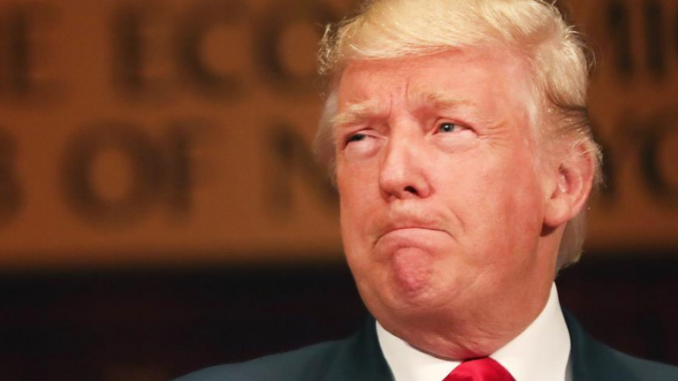
Donald Trump’s economic program has gone through several revisions and now deserves a citation at Trump University for “most improved.” The candidate’s New York Economic Club speech on Thursday, which included new tax reform details, was an encouraging if sometimes contradictory performance.
Mr. Trump’s rhetoric is often grim, but in New York maybe for the first time he talked more about solutions than problems. He even mentioned unrealized human potential. “We reject the pessimism that says our standard of living can no longer rise, and that all that’s left to do is divide up and redistribute our shrinking resources,” he said.
Mr. Trump identified economic growth as the most important domestic priority and set a “national goal” of reaching 4% from the 1%-2% trend of the Obama economy. That’s ambitious, but 2% isn’t some immutable ceiling and better policy could lift GDP. Jeb Bushalso took a 4% pledge, and such commitments are important in setting a direction for governance.
Growth can seem abstract, but it’s a general proxy for the standard of living. At 1%, the real economy will take about 70 years to double in size. At 2%, it’s about 35 years and at 3% only about 25. The question is whether Americans will benefit from the gains of this doubling of national wealth in their prime working years, or never. No major problem—from flat incomes to budget deficits to poverty—can be solved without faster growth.
Mr. Trump’s plan to overhaul a tax code that hasn’t been updated in 30 years would help. He’d collapse the individual income tax brackets from seven to three, with rates of 12%, 25% and 33%. To help make the fiscal math work, he introduced a new cap on deductions of $100,000 for single filers and $200,000 for couples. A cap is shrewd politics because it means not going to war with every pressure group in Washington that lives off loopholes.
The 33% top marginal rate is still too high, but that’s the same rate House Republicans proposed in their “Better Way” plan and Mr. Trump is explicitly selling “a working- and middle-class tax relief proposal.” Then again, the House GOP cuts the top rate on capital gains to 16.5% from 23.8%, and Mr. Trump only gets to 20%.
Mr. Trump has less fiscal space at his disposal because of the Ivanka Trump memorial child-care tax credit and deduction. This is one contradiction of his plan: The new entitlement does nothing for growth, and even as he promises a simpler and cleaner code he is creating another political carve-out.
Mr. Trump is more consistent on the corporate side, recommending a more globally competitive income-tax rate of 15% for all businesses including pass-throughs. His major new proposal is full expensing for U.S.-based manufacturers. Better to open expensing—which would eliminate the depreciation schedules that distort investment decisions—to all businesses, not just favored industries. These details would be hashed out in Congress in any case.
Mr. Trump discussed regulation at length, as many on Capitol Hill have been urging him to do. Regulation has multiplied and become a dead economic weight in the Obama years, and Mr. Trump promised a moratorium and streamlining. He also pledged to unleash U.S. energy production, which would mean more high-paying jobs for non-college grads.
On the downside, even as Mr. Trump promised to make the U.S. a mecca for investment, he concluded with another trade tirade. He said he’d kill the Pacific trade deal, renegotiate Nafta with Mexico and Canada, and use unilateral executive power to label China a currency manipulator.
The reality he’d discover in the White House is that trade adds to growth, creates jobs and drives productivity. Manufacturers won’t want to do business in America if they have to pay steep tariffs (a tax at the border) on their inputs, or if they can’t access global supply chains and open markets. A trade war when trade flows are already historically weak could lead to a global recession. What about that 4% growth goal, Mr. Trump?
Protectionism is a patent medicine, though Hillary Clinton is proposing a trade agenda little different from Mr. Trump’s. She even accuses him of stealing her ideas, like a roving trade prosecutor. As for the rest of her economic agenda, she’s running on the Obama status quo, only more of it: higher transfer payments, more taxes on investment, more regulation and another burst of spending on roads and bridges.
Mr. Trump at least recognizes that the U.S. economy isn’t stagnant because of potholes. Faster growth means lifting the oppressive burden of government of the Obama years, and on that score the Republican and Mrs. Clinton are offering voters a world of difference.
Source: WSJ


